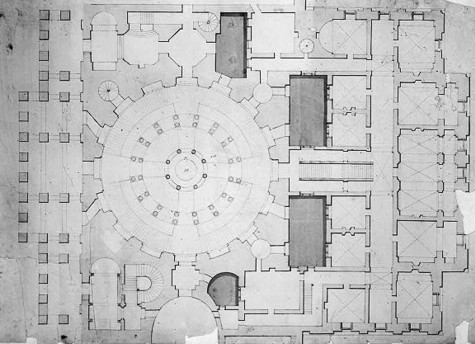 Last week, we saw how a story was started and spread, but how the question of the truth of the original Tribune article on which the whole story is based was casually omitted. In the article, the reporter makes a number of allegations, and, as it turns out, very few of them really happened the way that they were written up. Today, I’ll look at them line-by-line, to determine whether or not they’re true – and what really happened.
Last week, we saw how a story was started and spread, but how the question of the truth of the original Tribune article on which the whole story is based was casually omitted. In the article, the reporter makes a number of allegations, and, as it turns out, very few of them really happened the way that they were written up. Today, I’ll look at them line-by-line, to determine whether or not they’re true – and what really happened.
- “Not understanding what this meant, he sought knowledge from his fellow-members, but they were no wiser than he.” This is almost certainly true, as the line item for the “Superintendent of the Crypt” had been added by the Senate a few months earlier. They would have had no reason to have been confronted with this line earlier.
- “He then consulted the Appropriations bills for 50 years back and found the same thing charged in each bill.” This is most definitely false. Though in earlier years, the Senate did write in their expenses that they were paying a “watchman in the crypt” and even earlier than that, a “laborer attending furnaces in the crypt” this was always done as part of some other appropriation, apparently (though there is no direct evidence of this) that of the Capitol Police. In the lists of expenditures, the fireman/watchman of the crypt is invariably listed directly behind the expenditure for the Capitol Police, and when the line item was broken out in 1868, it was taken from the Capitol Police budget. What had happened was that instead of simply stating that the Capitol Police were given a certain amount of money for them to budget as they saw fit, instead, the Senate committee decided to tell them exactly how to spend their money.
- “After a determined search among the employes of the Capitol the Superintendent of the Crypt was found.” Since the Superintendent was nominally a part of the Capitol Police, this cannot have been too difficult a task: ask the Captain and you’re well on your way.
- “He was brought forward and made to relate his history.” Since the current holder of this office had been there less than three years, it is unlikely that he would have known the history of his job.
- “It seems shortly after Gen. Washington died an act was passed by Congress providing for the building of a vault beneath the Capitol which was to hold the remains of the immortal statesman and warrior, and to be called the Crypt.”This is true.
- “The duties of the Superintendent was to sit near the Crypt daily, from 9 a.m. until 3 p.m., and see that only one gas burner was used.” This may well be true for the current occupant – there is no indication of what the exact role of the Superintendent was in any of the records.
- “This the present occupant has done for the last 40 years, and now Gen. Butler cruelly proposes to abolish the office.” The first half is patently untrue. Numerous people are listed as working in the crypt: W. Dant in 1854, John Boyd in 1859, Thomas W. Phipps in 1861, G. W. Hall in 1866. Furthermore, the implication is that the job is being terminated immediately. In fact, it was simply not renewed for the next fiscal year: In May, 1869, the National Republican reported that “Captain John Bridges, of Maine, superintendent of the crypt of the Capitol, resigned his poisition, to take effect on the 30th of June.” The article continues by pointing out that this resignation “seems almost superfluous” in that Congress had already “abolished this sinecure.”
The one clue as to how all this came about is circumstantial, at best. In those lists of expenses from the early 1850s and before, the job is invariably listed as “fireman” while in the late 1850s, it is changed to “watchman” and then, finally, superintendent. The major change that occurred in the middle of the 1850s was the installation of central heating in the Capitol, obviating the need for firemen to work in the crypt. The only minor question that remained was why the position was converted from fireman to watchman – and not simply retired entirely at that point.
Finally, and ironically, Benjamin Butler himself was aware of this position a few years earlier. While serving as one of the impeachment lawyers in the trial against Andrew Johnson, Butler had prepared a list of “the various officers in the United States who would be affected by the President’s claim here of a right to remove at pleasure.” Among those listed? “Watchman in the crypt.”

